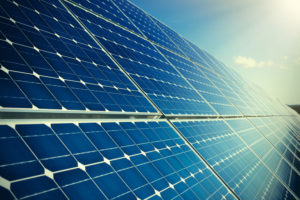Will Solar Energy for Commercial and Educational Facilities Become a Permanent Trend or a Flash Fad?
Utilizing solar energy has been on the rise over the past few years, and it has also undergone many advances that have been beneficial for reducing emissions. Reducing emissions has been a main goal among energy conservationists, and requirements have been put into place for federal and commercial facilities.
But is it just a fad? Based on the efforts of the government and many other dedicated organizations, solar energy is here to stay. It will only become more prominent in the future based on advances in solar energy and the requirements and laws being put in place.
Learn more about solar energy and the steps that we’ve been taking toward it to reduce emissions.
Emission-Reducing Efforts
The Energy Independence and Security Act was signed in 2007. According to the act, “The three key provisions enacted are the Corporate Average Fuel Economy Standards, the Renewable Fuel Standard, and the appliance/lighting efficiency standards.” This act requires federal facilities to reduce their energy use for both new and existing facilities.
This act also details the Net-Zero Energy Commercial Buildings Initiative. This initiative began in August 2008 and is “the overarching effort of the Department of Energy’s Commercial Buildings Program which aims to achieve marketable net-zero energy commercial buildings (NZEBSs) by 2025,” according to the initiative.
Federal facilities must work toward emissions reduction by following the goals of Executive Order 13693. Established in 2015, the executive order details the official planning of federal sustainability all the way into the next decade. It discusses improving environmental performance and federal sustainability by reducing energy and cost while also researching and obtaining renewable or alternative energy solutions.
New Solar Energy Technology
Facility managers are finding advanced ways to meet emissions requirements, which has led to new developments that we haven’t yet seen in facilities that exist today. Facilitiesnet.com reviews these new developments.
Perovskites: These materials, found by Northwestern University and the US Department of Energy’s Argonne National Laboratory, is less costly when used in solar panel production than the silicon-based materials that are typically used in solar panels. Though the product isn’t available in stores yet and will need to be further researched, more people will be able to afford less costly solar panels.
Nanotechnologies: The US National Nanotechnology Initiative has been utilizing nanoparticles and nanostructures within solar energy technology to improve light absorption and increase the conversion of light energy into electrical energy. Other benefits include lower production costs, lower installation costs, and higher efficiency.
Solar windows: Solar windows have a liquid coating that uses the energy from the sun. This liquid turns the windows into electricity generators.
Facility managers must adhere to strict requirements, and utilizing these new developments allows them to do so affordably and efficiently.
While the most effective and affordable methods and tools for incorporating solar energy into facilities are still being developed, they’re well underway and will be beneficial far into the future. Click here to find out where to buy sustainable products for your facility from Scranton Products.


